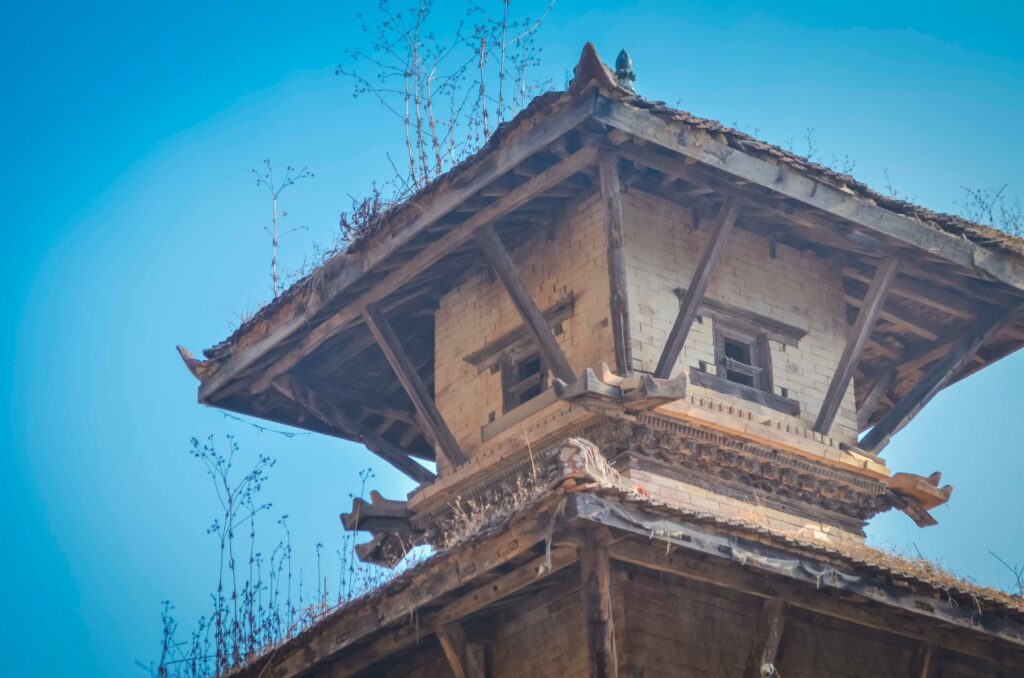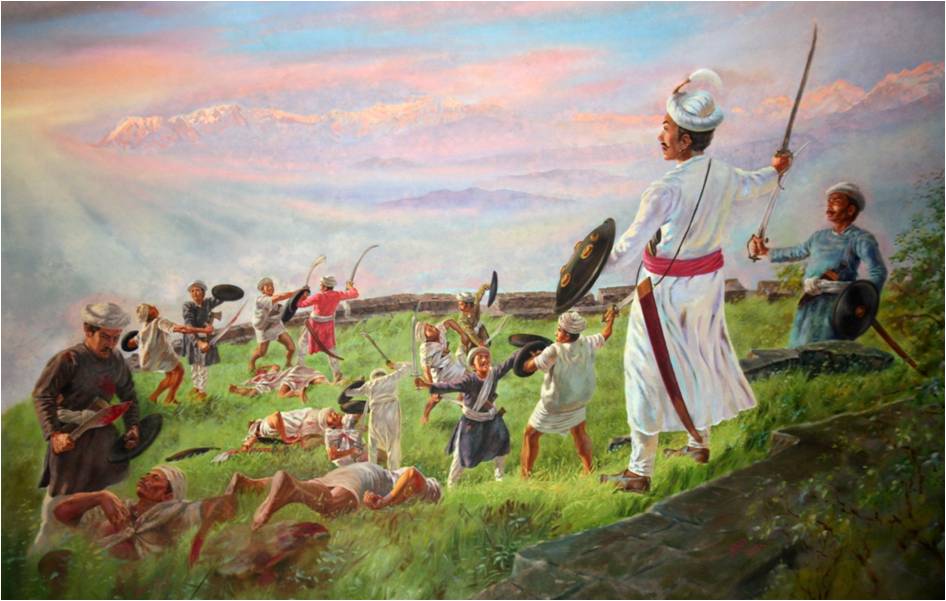4 NIGHTS 5 DAYS IN LIGLIGKOT

DAY 1: Assemble at school at 7:00AM and start our journey to Ligligkot by 7:30 to beat the traffic. Have breakfast on the way at 21 kilo. Continue our journey towards Ligligkot with a lunch stop at Mugling. Arrive at Dharapani (our campsite) around 3:00 PM and start pitching tents. Have tea and snacks and take a short walk around the campsite. Have dinner and lights out at 9:00PM
Day 2: At 10: AM, visit the local village school and participate in the exchange program. The program is discussed by the students and teachers beforehand. Some schools paint a section of the school, some donate stationary and sport items. We leave it at the discretion of the school). After the school activity head back to the campsite to lunch and after a short rest, take a village walk to learn about the economy, culture, flora and fauna. In the evening have snacks and then participate at the bonding session and have dinner.
Day 3: Wake up in the morning at 7:00 AM and do some drills on packing the tent and cleaning the campsite. After breakfast start our hike to the Ligligkot Fort. The hike is around 3hrs long through jungle and village settlements. On reaching the top, learn about the history, culture and future restoration and development of Ligligkot from the President of the Ligligkot Development Board. Lunch will be served at the top of the hill. At mid afternoon, hike back to the campsite and rest for the evening. The evening will include bonfire and experience sharing session.
Day 4: After breakfast, assemble in the field and participate in a day long experiential learning program. The program will include an intense day of softskills training, effective communication and team work activities. Students will also learn about basic first aid. In the evening have a quick dinner and assemble for an evening of cultural program. The cultural program will be organized by the women self help group.
Day 5: Wake up early in the morning and be on the road by 7:00 AM. On the way stop at Bimalnagar and hike for 30 mins to visit Siddha Gufa- a 400m long cave. Have lunch and Mugling and drive back to Kathmandu. Reach school by 5:30-6:30 PM depending on the traffic.
NOTE: During the whole program, interested students will also be taught about photography and they will be given the opportunity to take professional photographs throughout the trip.
- 4 Nights camping accommodation at Dharapani with tents and sleeping bags
- 5 Breakfast
- 4 Lunch
- 4 Dinner
- Transportation – Kathmandu- Ligligkot- Kathmandu
- Vat @13%
- Insurance
- Personal Medication
- Personal Expenses
- Personal food
- Anything not mentioned in the includes list
Liglig is a hill in western Gorkha district, overlooking the Chepe and Marysangdi rivers. The crest of the hill is a north-south ridge that covers about 15 acres. Today, the site contains the ruins of four forts, foundations of numerous buildings, moats, defensive walls, and other structures. For over two hundred years, Ligig was arguably the most important fort in central Nepal.
No one knows when Liglig in western Gorkha was first settled, but it is likely to have been occupied during the Licchavi period. Our story begins in the 14th century, when the break-up of the Malla empire in Jumla created many small kingdoms. These kingdoms, called the chaubisi and baisi, were ruled by Magars, Gurungs, Ghales and other local groups.
During this time, Rajputs left Rajasthan to escape Muslim invaders. Moving eastward, by the 15th century they had arrived in the Gandaki basin at the eastern edge of the chaubisi kingdoms. In 1467, the Rajput Kulmandan Khan conquered the Ghale kingdom of Kaski. He then changed his family name to Shah, the first of many Shah kings to come. In 1493, his son Yashobrahma Shah conquered the Gurung kingdom of Lamjung.
Yashobrahma Shah had two sons. Narahari Shah, the elder son, would inherit the kingdom of Lamjung from his father. Drabya Shah, the younger son, wanted his own kingdom and decided to conquer Gorkha to the east, a kingdom ruled by Ghales and Khadkas.
But before seizing Gorkha, Drabya and his allies first needed to secure Liglig, a Ghale kingdom. The Ghales of Liglig had an unusual custom for choosing their king. Every year on Vijayadashami the warriors would race from Chepe Ghat to Ligligkot. The winner would be king for a year.
In 1559 CE, on the day of the race, while the Ghale warriors were racing up Liglig, Drabya Shah and his army attacked. The Ghale warriors would have been tired from the race and lightly armed. With the element of surprise, Drabya Shah won the day. And so the Shah dynasty that ruled Nepal until 2008 was
established – by a trick. This initial victory won, Drabya Shah attacked Gorkha. The battle raged for 15 days before Drabya Shah slew the Khadka king. In September, 1559 he was coronated king of Gorkha.
The reign of Prithvipati Shah (1673–1716 CE) saw near-continuous wars with Lamjung. Between 1685 and 1694, Lamjung occupied the area between the Marsyangdi and Daraundi river three times. Finally, in 1694, Prithvipati mobilized all men between the ages of 12 and 80. The lost territory and forts were recaptured, but Liglig was burned.
Several years later, Lamjung again seized Liglig. Gorkha got it back – again by a trick and again on Dashain. Prithvipati’s second son, Ranadurlabh, pretended that his father had expelled him and then “fled” to Liglig. The commander there was Davanal, Lamjung’s crown prince. Ranadurlabh and Davanal became friends. At Dashain, Davanal went to see his father and put Ranadurlabh in charge of Liglig. Ranadurlabh sent word to his father Prithvipati that it was time to attack. Liglig was retaken.
The wars continued through much of the reign of Narabhupal Shah (1716–1743 CE). But in 1739, Gorkha and Lamjung made peace. For several years, the two kingdoms even joined in attacking some of the other chaubisi states.
Things changed under Prithvinarayan Shah (1743–75 CE). He is most famous for his capture of Kathmandu, but this ambitious king also had his sights set on the chaubisi kingdoms to the west. For most of his reign, Gorkha was at war with Lamjung and its chaubisi allies.
During his reign, Liglig remained central to Nepal’s western defense. Along with Dhading and Salyan, Liglig was named one the three major thums. In one letter, Prithvinarayan ordered that Ligligkot be sent 120 dhuri (large logs suitable for house beams). Two letters from 1774 alerted the recipient to a possible attack from Lamjung and Parbat, and instructed him to assemble a force at Liglig. This was to be done in secrecy, and the troops were to advance quickly across the Marsyangdi when ordered.
Prithvinarayan Shah died in 1775. He is known as the unifier of Nepal, yet when he died. Nepal’s western border was still the Marsyangdi river, just as it had been 200 years earlier.
And the wars went on. For the next ten years, Gorkha and Lamjung continued to chase each other out of their territories. The lands around Liglig were a major battleground.
In 1784, Gorkha began its final push west. By 1786 the frontier of Nepal extended past the Bheri river. Lamjung and the other chaubisi were incorporated into greater Nepal. The wars were over. Ligligkot was no longer needed. The fortress began its long decay into the ruins we see today.



